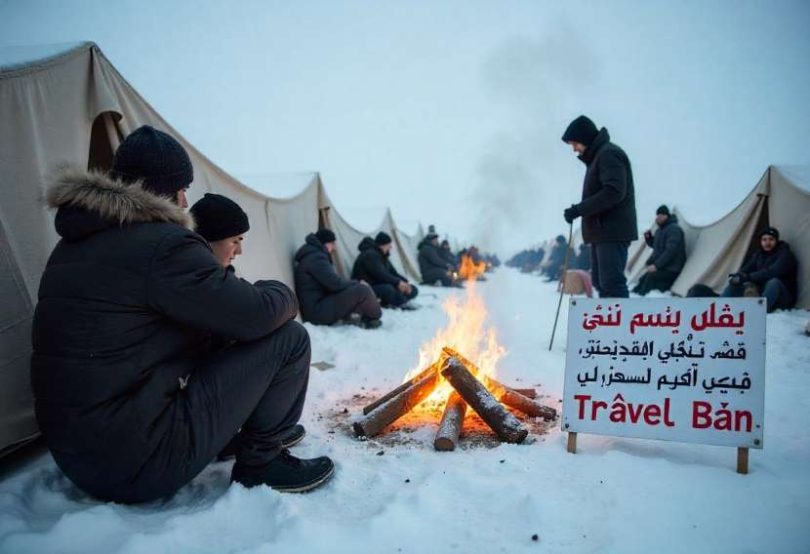Saturday, July 12, 2025
The travel ban by the Trump administration, which was launched in 2017, sent ripples on international travel, impacting touristic activity and mobility between citizens from countries such as Iran, Libya, Syria, Yemen, Somalia, Venezuela, and North Korea. The repercussions from this controversial decision transversed borders, most importantly to prominent destinations, where tourists had to adjust and adhere to new policies and travel bans. As such, the world experienced significant changes among its tour flow between countries, such as the United States. So, how does this affect travelers, and how did countries react to policies from the era of Trump?
Across the Middle East and Latin America, the travel ban put up barriers that several states strove hard to overcome, and to one extent or another, they succeeded. Let us take a closer look at affected states and the resulting impacts on travel to and from the world, and especially on travel to the United States and countless other places throughout and since this policy was instituted.
What Was the Travel Ban?
The travel ban, or “Muslim Ban” as it came to be referred to, was first published in January 2017 and was then expanded by subsequent amendments. The policy affected nationals from specific countries—with the bulk being those that are Muslim-dominated. The list included the countries Iran, Libya, Syria, Yemen, Somalia, Venezuela, and North Korea, though there were several others, like Chad, that briefly appeared on the list. The policy prevented admission to the U.S. to the nationals from these countries, supposedly on national security and terrorism-preventing grounds.
As the travel bans from the Trump administration kept increasing, they became extremely controversial and ignited arguments pertaining to balancing national security and global cooperation. The travel and tourism industry rapidly reflected the effect, and tourists and travelers from targeted nations wrestled with doubts pertaining to traveling to the U.S. and destinations around the globe.
Impact on Renowned Travel Destinations
Though the entire emphasis was on the United States, its impact was experienced throughout other parts of the world, particularly on those nations that experienced massive tourism from affected countries. The United Kingdom, Germany, Australia, and Canada experienced changes within their travel industry. Let us take a look at how travel restriction impacted those tourist destinations.
United States: Bittersweet Affair with Tourism
For the United States, tourism plays an essential role as an industry contributing to the country’s economics heavily. However, following the enactment of the travel ban, nations such as Iran, Libya, Syria, and Yemen experienced an immediate drop-off on tourists from those areas. Citizens from these nations, who normally traveled to the U.S. on a tourist visa, a work visa, or to join their families, became victims of the politicized standoff.
As reported by the U.S. Department of Commerce, tourism from countries such as Iran plummeted. Iranian citizens, many who had been regular tourists to the U.S., were suddenly confronted by travel bans that rendered traveling there virtually impossible. The travel restriction affected not just tourism, but academic exchange and business partnership, too. U.S. universities experienced a loss of Iranian students, and companies that had benefited from overseas customers also suffered.
While the travel ban impacted travelers directly from among these 12 nations, its repercussions spread to other areas within the tourism industry. For example, countries like Canada, which have a very good tourism relationship with the United States, saw their travelers rerouting journeys to avoid U.S. airspace or policies that made arrival difficult.
Iran: Abrupt Decline in Americans Visiting
The travel restriction bothered particularly Iranian nationals. Given that the U.S. was an especially sought-after travel destination among Iranians owing to its prospect for advanced learning, entrepreneurial prospects, and reunification with relatives, there was universal difficulties obtaining and comprehending the highly restrictive visa requirements. Traveling to the U.S. from Iran thus came to a grinding halt. The U.S. embassy in Tehran was closed much earlier even than the travel restriction, and obtaining a visa to travel to the U.S. became virtually impossible when the policy was instituted.
Travel to other destinations, e.g., neighboring states like Turkey or the UAE, was considered a circumvention, yet the ban rendered many Iranian nationals unable to travel without restriction. The Ministry of Tourism from Iran cited economic and cultural losses from the decline in overseas tourists and the tense diplomacy that stemmed from the sanctions.
Libya, Syria, and Yemen: Middle East Tourism Affected
Libya, Syria, and Yemen were just as affected by the travel bans. These nations, which were going through conflict and political unrest to begin with, saw further impediments erected to their citizens traveling overseas. For Syrians fleeing from combat and seeking to obtain asylum or refuge within the U.S., the travel ban was a bitter blow. Some were unable to reunite with their families back in the States, and still others became stuck within refugee camps or countries that yielded little hope of resettlement.
Libya and Yemen, which maintained relatively modest numbers of U.S. visitors before the ban, experienced interrupted international tourism. Numerous residents from those nations, such as businessmen and students, were prevented from visiting the U.S., restricting economic and cultural exchange. Regional neighbors from Europe and Africa, such as Italy and Egypt, experienced a moderate expansion from those nations, yet such destinations failed to compensate entirely for the lost opportunities from U.S. travel bans.
Somalia: Travel to Diaspora Communities Disrupted
Somalia, which has an extensive diaspora population within the U.S., was severely affected by the Trump administration’s travel ban. Somalis within the U.S. were alienated from their loved ones back home, and to those who still wanted to travel to see their loved ones or to take part in major events, such as funerals or wedding ceremonies, the travel ban presented severe personal and emotional difficulties. Somalia’s Ministry of Tourism expressed worries regarding the adverse effect the travel restriction had on the nation’s global reputation and its tourism prospect, especially on the African continent.
The Somali tourists, like this smaller category, also found it hard to travel to the U.S. on travel or business visits. As there are limited direct travel channels to the U.S., Somalis were accustomed to traveling via layovers or transcontinental flights from a third country, but this was further hindered by the travel ban. Therefore, Somali tourists increasingly turned to travel destinations from within the African Union or to Kenya and Ethiopia, from which travel channels remained relatively free.
Venezuela: Effects of Economic and Political Tensions on Tourism
The Venezuelan political crisis and travel bans instituted by the Trump administration further added to the nation’s economic woes. Venezuelans traveling to the U.S. to find better prospects were very much affected by the visa bans, which not just inhibited travel and tourism but even professional and scholarly exchanges. The Venezuelan government, however, still actively encourages different routes through travel by means of other Americas and European nations, and there was even an increase in Venezuelan tourists to places such as Spain and Mexico.
How Other Nations Reacted
Most countries, particularly those from Europe and North America, synchronized their policies to become attractive to travelers impacted by the ban. Canada, for example, marketed itself as an attractive alternative to residents from banned countries, and its visa policies became streamlined and its entry policies more friendly. The UK followed, and cities such as London became attractive destinations to travelers from impacted regions. Alternative destinations such as Canada, the UK, and European destinations, particularly those that have widespread diaspora populations within impacted states, saw a spike within this time period. For the average tourist, circumventing the U.S. was a necessity, but such alternative destinations helped offer familiarity within an interrupted travel dynamic.
Conclusion: The Ripple Effects of the Travel Ban
The travel ban by the Trump administration had an enduring effect on international travel. Though directly targeting citizens from 12 countries, the overall effect was global. From tense diplomatic ties to shifts in tourism flows, the policy instilled an environment of unpredictability that still pervades travel to date. As destinations such as Canada, the UK, and EU members welcomed the world, travel dynamics have been transformed, and new destinations have gained popularity.
For those impacted by the ban, the travel restriction highlighted the value of open borders and the difficulties that develop when national security interests are measured against the value that cultural exchange and tourism provide. The travel ban, a chapter that belongs to history, serves as an important chapter within the history of global tourism, one that tourists, governments, and the travel industry will think back on years to come.











